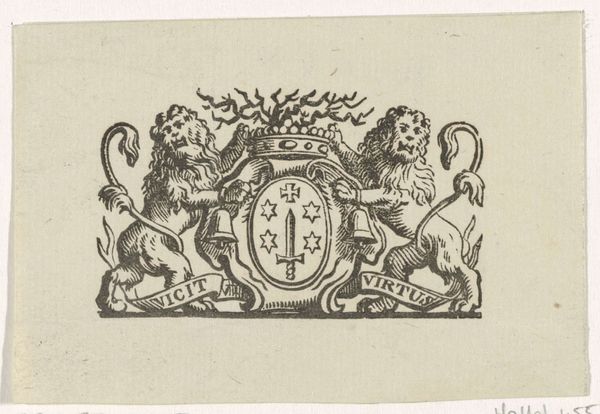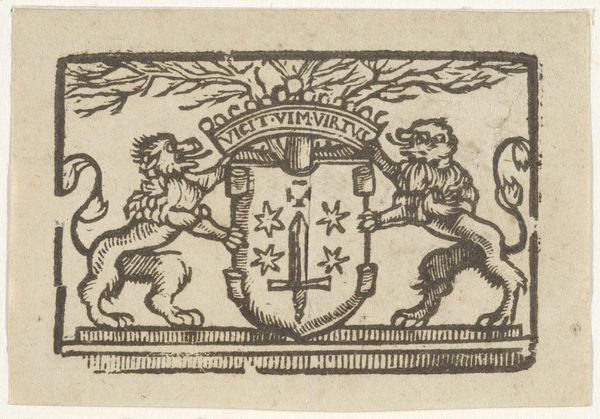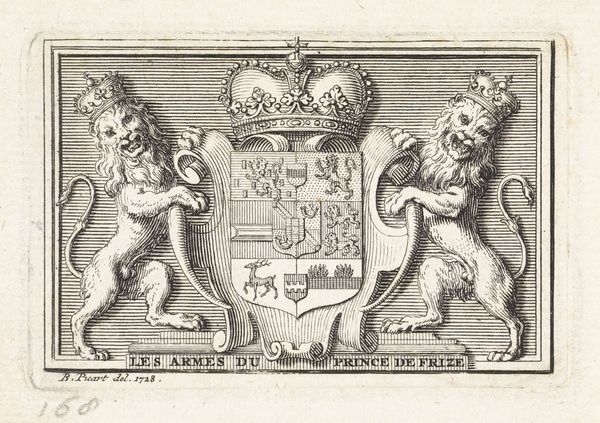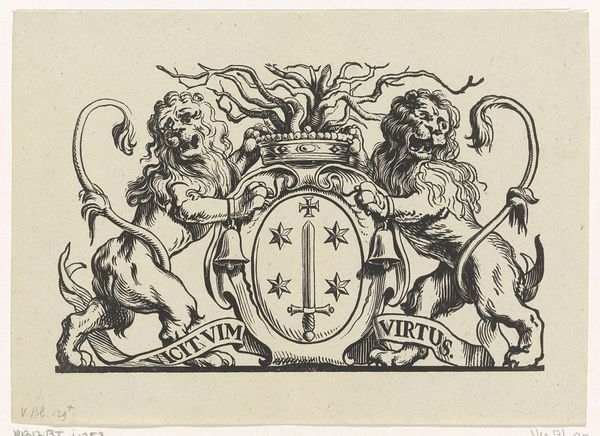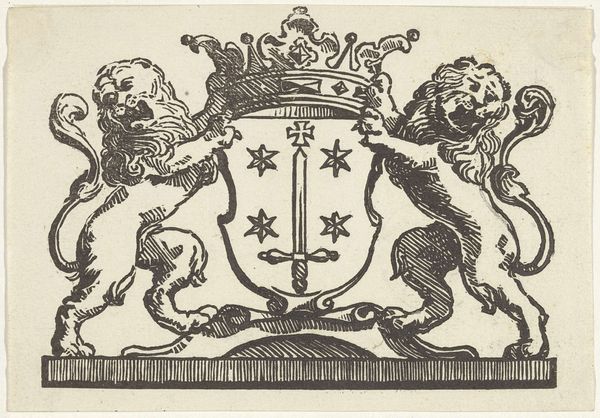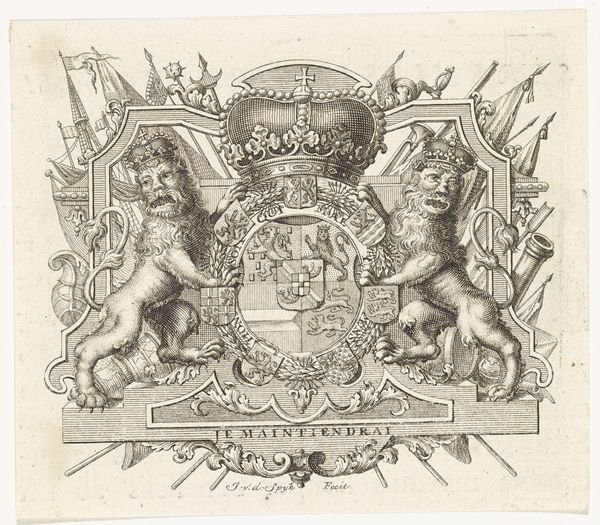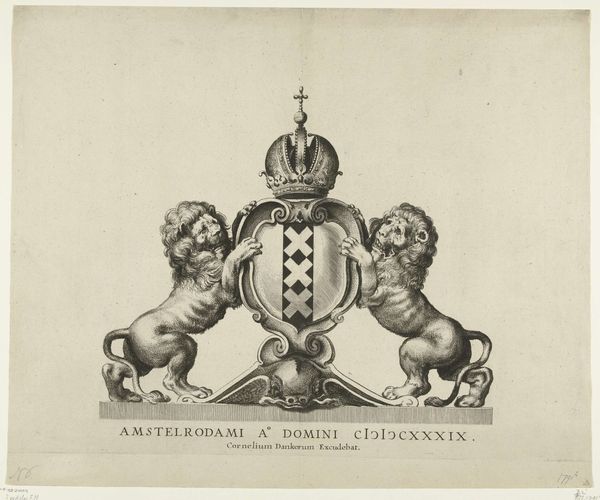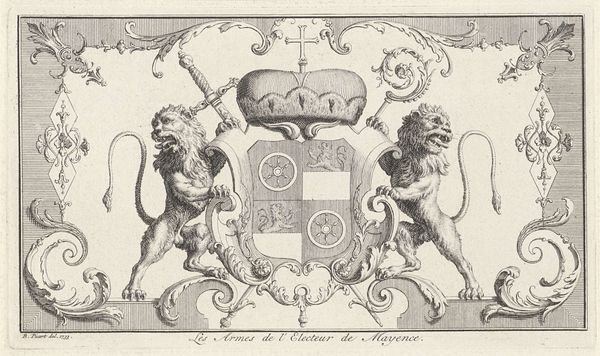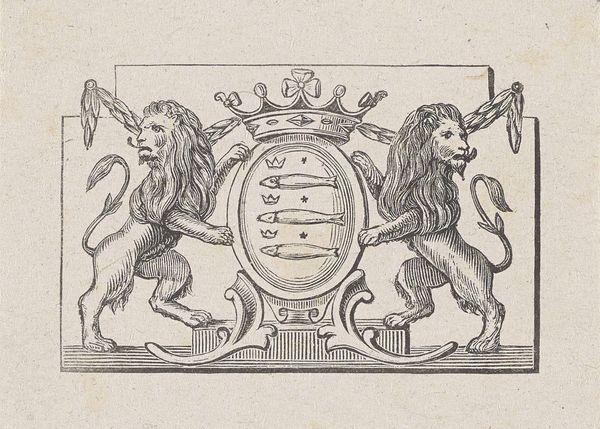
drawing, print, etching, ink, pen
#
drawing
#
ink drawing
#
allegory
#
pen drawing
#
dutch-golden-age
# print
#
etching
#
figuration
#
ink
#
geometric
#
line
#
pen
#
miniature
Dimensions: height 46 mm, width 74 mm
Copyright: Rijks Museum: Open Domain
Curator: At first glance, this work, executed in pen and ink, conveys a sense of archaic authority despite its miniature size. The symbolism feels deliberately constructed, potent in its stark lines. Editor: Precisely! What we're looking at is a 17th-century etching that carries the title, "Vignet met het wapen van de stad Amsterdam"—A Vignette of the Amsterdam Coat of Arms, by an anonymous artist. Its power, in my opinion, lies in the ability of civic heraldry to shape collective memory. Curator: Notice how the twin lions flanking the shield project a certain regality; they guard the central image beneath a regal crown, creating an almost pyramidal composition. Heraldic lions, potent across cultures, embody courage, nobility, and sovereignty here, their fierce visages softened, almost domesticated. Editor: Domesticated perhaps, yet these emblems, and indeed their very presentation within a miniature print available for wide distribution, subtly communicated Amsterdam's growing global power in the Dutch Golden Age. These weren't just artistic flourishes but carefully constructed public images. Curator: True, these weren't mere artistic choices. The "XXX" on the shield isn't an accident. It symbolizes courage, steadfastness, and mercy, but the precise meaning has been debated. Regardless, it acted, and still does, as a potent trigger of civic belonging. It anchors identity. Editor: Absolutely, these images circulated widely, appearing in prints, books, even maps. By studying their prevalence, we get a clear sense of how the Amsterdam elites sought to shape a specific, unwavering narrative of their city. The continuous visual echoes amplify the state's narrative. Curator: I wonder about its circulation within the city, considering it as part of an array of commercial and legal visual representations. I imagine citizens would encounter such imagery routinely in public spaces or documents—a continuous reinforcement of power, as you point out. Editor: Exactly. So while a modern viewer may see simply a historical curiosity, the 17th-century public encountered a far more loaded image. Studying pieces such as this, no matter how small, is vital if we're to truly grasp how the Dutch Golden Age manifested in the everyday. Curator: An assertive representation, then, shaping minds as well as spaces, even today. Editor: Indeed, still informing perceptions, highlighting that civic iconography has lasting consequences on our mental geography.
Comments
No comments
Be the first to comment and join the conversation on the ultimate creative platform.


